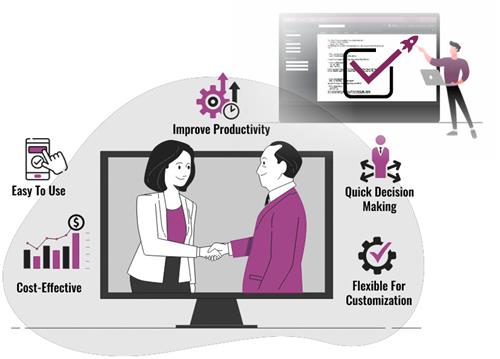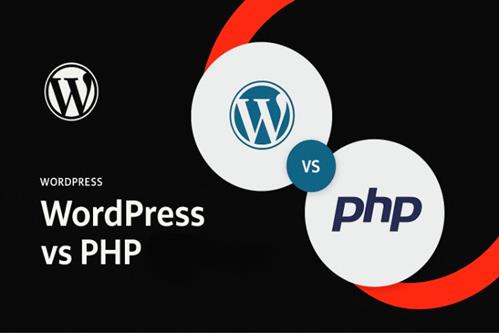Fractional, Part-Time (virtual) or Interim CTO: Who Will Cover Your Business Needs?
Last updated: June 29, 2024 Read in fullscreen view
- 01 Aug 2024
 The Standish Group report 83.9% of IT projects partially or completely fail 150/1772
The Standish Group report 83.9% of IT projects partially or completely fail 150/1772 - 13 Apr 2024
 Lessons on Teamwork and Leadership from Chinese story book "Journey to the West" 41/949
Lessons on Teamwork and Leadership from Chinese story book "Journey to the West" 41/949 - 02 Nov 2021
 What is Terms of Reference (ToR)? 23/1466
What is Terms of Reference (ToR)? 23/1466 - 03 Apr 2022
 Microsoft Solutions Framework (MSF) 12/1157
Microsoft Solutions Framework (MSF) 12/1157 - 18 Dec 2023
 The Cone of Uncertainty in Scrum & Requirement Definition 8/643
The Cone of Uncertainty in Scrum & Requirement Definition 8/643 - 18 Oct 2021
 Key Elements to Ramping Up a Large Team 7/1108
Key Elements to Ramping Up a Large Team 7/1108 - 20 Jul 2022
 Software Myths and Realities 4/797
Software Myths and Realities 4/797 - 07 Jul 2022
 Managing Project Execution Terms 3/379
Managing Project Execution Terms 3/379 - 10 Apr 2024
 The Parking Lot Method: Unlocking a Simple Secret to Supercharge Your Productivity 3/403
The Parking Lot Method: Unlocking a Simple Secret to Supercharge Your Productivity 3/403 - 26 Sep 2024
 Successful Project Management Techniques You Need to Look Out For 2/368
Successful Project Management Techniques You Need to Look Out For 2/368 - 17 Jun 2021
 What is IT-business alignment? 2/343
What is IT-business alignment? 2/343 - 02 May 2022
 What Is RAID in Project Management? (With Pros and Cons) 2/734
What Is RAID in Project Management? (With Pros and Cons) 2/734 - 24 Nov 2023
 The project management paradox: Achieving MORE by doing LESS 2/193
The project management paradox: Achieving MORE by doing LESS 2/193 - 14 Jun 2022
 Example and Excel template of a RACI chart in Software Development 2/707
Example and Excel template of a RACI chart in Software Development 2/707 - 12 Aug 2022
 What is End-to-end project management? 2/382
What is End-to-end project management? 2/382 - 15 May 2022
 20 Common Mistakes Made by New or Inexperienced Project Managers 2/247
20 Common Mistakes Made by New or Inexperienced Project Managers 2/247 - 22 May 2022
 What are common mistakes that new or inexperienced managers make? 1/243
What are common mistakes that new or inexperienced managers make? 1/243 - 27 Jan 2020
 Should a project manager push developers to work more hours due to mistakes of manager schedule setting? 1/412
Should a project manager push developers to work more hours due to mistakes of manager schedule setting? 1/412 - 07 Dec 2023
 12 project management myths to avoid 1/167
12 project management myths to avoid 1/167 - 01 Mar 2024
 10 Project Management Myths 1/120
10 Project Management Myths 1/120 - 01 Aug 2022
 Is planning "set it and forget it" or "set it and check it"? /264
Is planning "set it and forget it" or "set it and check it"? /264 - 02 Jun 2024
 Reviving Ancient Wisdom: The Spiritual Side of Project Management /204
Reviving Ancient Wisdom: The Spiritual Side of Project Management /204 - 15 Aug 2025
 Quantum Technology: Global Challenges and Opportunities for Innovators /56
Quantum Technology: Global Challenges and Opportunities for Innovators /56 - 30 Nov 2023
 Project Managers, Focus on Outcomes — Not Deliverables /143
Project Managers, Focus on Outcomes — Not Deliverables /143 - 02 Nov 2022
 Difference between Change Management and Project Management /216
Difference between Change Management and Project Management /216 - 23 Jun 2024
 Best Practices for Managing Project Escalations /183
Best Practices for Managing Project Escalations /183 - 21 Jun 2024
 Dead Horses and the Escalation of Commitment /123
Dead Horses and the Escalation of Commitment /123 - 17 Oct 2021
 Does Fast Tracking increase project cost? /348
Does Fast Tracking increase project cost? /348 - 13 Jan 2020
 Quiz: Test your understanding project cost management /568
Quiz: Test your understanding project cost management /568 - 02 Dec 2021
 3 Ways to Avoid Scope Creep in IT Consulting /192
3 Ways to Avoid Scope Creep in IT Consulting /192 - 06 Jun 2022
 Change Management at the Project Level /292
Change Management at the Project Level /292 - 09 May 2022
 Build one to throw away vs Second-system effect: What are differences? /297
Build one to throw away vs Second-system effect: What are differences? /297 - 10 May 2022
 Levels of Teamwork /180
Levels of Teamwork /180 - 03 Jan 2023
 Organizing your agile teams? Think about M.A.T (Mastery, Autonomy, Purpose) /333
Organizing your agile teams? Think about M.A.T (Mastery, Autonomy, Purpose) /333
For businesses that want to gain, maintain, and develop their competitive edge (especially those in their growth stages), the CTO is one of the most valuable human resources. Chief Technical Officer (CTO) is one of the C-level executives responsible for all aspects of business tech strategy and software development, R&D, innovative product development, technical leadership on both team and board levels and a plethora of other tasks that will vary depending on the companies' specifics and other factors.
We already wrote about the role of a CTO in business, and why you should consider hiring CTO as a service in more detail in our previous article.
What is Fractional, Part-Time, and Interim CTO
Cost-effectiveness and flexibility are some of the key motives for business owners to look in the direction of the on-demand CTO services. The cost of hiring a full-time CTO is very high, considering their skills, experience, creative vision, and strategic mindset. Many companies cannot afford top talent or, they might not need them in-house at this stage of business development. For example, you launched a great product, your organization is now putting more effort into sales and acquiring new customers, and the level of product complexity doesn’t require CTO services to administer it for some time. According to TechCXO, the on-demand executive model can be 50-75% more time and cost-effective than a full-time position.
Fractional, interim and part-time CTO are all different models of employing a CTO depending on your business needs and the number of efforts they will be putting in:
-
Fractional CTO. As the name suggests, they focus on a fraction of the responsibilities and specific areas of requirements. Generally, fractional CTO works one day a week/ ad hoc to solve specific problems, control some processes, provide coaching, or cover other of your business needs. They usually share responsibility with other in-house resources. Fractional CTO services will be invaluable in the early stages of your company or product, as you are validating your market and testing product strategies, without draining your budget. Also, you can include a fractional CTO to your pitch deck to help your company raise investors as you progress, to the point where you need to hire a full-time talent.
-
Part-Time CTO. The main difference between a part-time and a fractional CTO is that a fractional CTO's responsibilities are limited to a certain number of tasks, whereas a part-time executive looks after all the responsibilities but to a negotiated number of hours per month, usually on a long-term basis. Part-time CTO can help you in situations where you need something more than an ad hoc advisor but less than a full-time executive.
-
Interim CTO. In situations when you’ve abruptly lost or might lose your CTO, an interim executive could be your lifeline to keep the product on track, and the team engaged until you find a replacement. Interim CTOs are transitional CTOs who generally work on a fixed-term contract depending on the value you need them to provide: attend the weekly meetings, oversee DevOps, provide sales support, communicate with stakeholders, etc. They can as well assist you during the recruitment process by conducting interviews with potential candidates, making sure that they are a strategic fit for your business.
On-demand Technical Leadership for Business: Pros and Cons
Fractional CTO services have long been associated generally with startups. However, there has been a change in thinking about the value a part-time CTO can deliver. Early to mid-stage companies often do not require a full-time CTO for every function. So, in which way the fractional, part-time CTO opportunities, and interim CTO services can be beneficial for your business? What are the cons of this approach? Let’s find it out.
- Fractional CTO delivers equal (if not greater) experience, capabilities as a full-time executive without the associated level of salary, bonuses, and overhead often required to attract and retain a CTO;
- Fractional/ interim CTO is an independent, vendor agnostic, trusted advisor on your side and in it for the long-term;
- Fractional/ interim CTO can act as a turnaround agent when there are challenges with an existing development team (missed deadlines, an unacceptable level of bugs, etc.), and help figure out what needs to be done to turnaround problem situations;
- Facing down challenges: fractional/ part-time/ interim CTOs do similar work for other clients. They may have faced given challenges earlier and are not limited to a point of view of their company, having the freedom to provide an outside perspective to your business tech strategy;
- External know-how brings new ideas and unbiased view on best practices and vendors, helping your development team become more productive and effective;
- Small and medium-sized companies planning to launch a new product, can approach a fractional CTO to ensure timely deployment and effective troubleshooting of ongoing issues;
- For companies that have never had a CTO and/or a tech strategy and who lack a product mindset, it is an opportunity to reframe their product perspective and to remain relevant in an ever-changing technology landscape;
- Business owners have the flexibility to scale up or down how much time a fractional CTO spends with your company, call on expertise when needed, on-site, or remotely.
- It is questionable whether fractional/ part-time CTO is the right choice for an established company with complex needs;
- Fractional/ part-time and especially interim CTO cannot be fully engaged in strategic roadmap discussions with a time frame of 2-5 years in which most CTOs operate, due to the nature of their hiring;
- The interim model lacks flexibility for a client.


































 Link copied!
Link copied!
 Recently Updated News
Recently Updated News